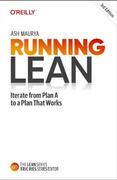
A 5 Minute Overview Of
Running Lean
Iterate from Plan a to a Plan That Works
About the Author
Ash Maurya is the creator of the Lean Canvas business modelling tool, and the founder/CEO of consulting firm LeanStack.. He is also the author of the bestseller, Scaling Lean. His business themed blog has been featured in Inc. Magazine, Forbes and Fortune. He also hosts workshops, serves as a mentor to several accelerators including TechStars and Capital Factory, and serves as a guest lecturer at MIT, Harvard, and UT Austin. Ash Maurya is on the advisory boards of several startups. He is a graduate of the Rochester Institute of Technology.
The Main Idea
There's nothing worse than building something nobody wants, and that customers won't buy. To avoid that fate, always take your original business plan (your Plan A) and run it through the three-step Running Lean Model. Come up with a Plan B version that will actually work.

The Running Lean Model is a traction-first approach. You iterate to a plan that works by using three hands-on processes:
- Design — you put together your plan on paper first, using the Lean Canvas business modelling tool. Getting everything down on paper first does away with vague statements masquerading as facts.
- Validate — all the ideas and assumptions that underpin your business model. Start with your riskiest assumption first
- Grow — start generating traction, identify and address your key constraints, and start systematically testing aspects of your business plan.
Always have the mindset a working and profitable business model is what you're ultimately trying to develop. Don't view your solution as the product. Aim to iterate your way towards having a business model that works.
Spend more time building and less planning your business. Time is your scarcest resource. Spend it wisely.
The Running Lean Model
1. Design. You have to view your business model, not your solution, as the true product of your startup. With that in mind, designing and deconstructing your initial vision (your Plan A) into a business model is job #1. The best way to clarify your thinking, and communicate your idea, is to put together a 1-page version using the Lean Canvas methodology.
2. Validate. All business models (including your Plan A) are abstractions of reality. They make assumptions, explicit or implicit. To get to something that works in the real world, you have to stress test those assumptions. Start with your riskiest assumption first (that you have a viable problem/solution fit), and run some 90-day cycles to validate your ideas. Learn which assumptions are correct, and which need to be swapped out.
3. Grow. Once you achieve viable problem/solution fit, you then have a product you know customers will buy, rather than just hoping they will buy. You now want to launch your first product, and start generating traction as your iterate toward optimum product/market fit (Plan B). Use a stage-based launch strategy at speed to test your model at a small scale and ensure repeatability before pursing scale and growth.
Key Takeaways
- The ultimate aim of any startup is to come up with a business model that works. Products are great, but it's the business model that counts.
- Having new ideas is helpful, but what really counts is having a process to quickly separate good ideas from bad ideas. That's what lean is all about.
- Customers don't care about your solutions. All they care about are their problems. Never forget that.
Summaries.Com Editor's Comments
Awesome book this week. We summarized the 3rd edition of the classic book RUNNING LEAN written by Ash Maurya. He's very well known in the lean world, being the creator of the one-page Lean Canvas business modeling tool. He makes the very valid point there's nothing worse than building something nobody wants. The Running Lean approach avoids that. This is all about being able to move from your original ideas (Plan A) to a plan and business model that genuinely works (Plan B).
I also liked his underlying philosophy the aim of any startup is not to come up with a great product, but to put together a business plan that works. Great advice. Having a great product is a awesome, but it's not enough in and of itself. Having a working and profitable business model is true success, because that's expandable and sustainable. The Running Lean approach is to design, validate, and grow your business model by getting stuff out into the marketplace and seeing what potential customers think. Very smart.
All in all, a great addition to the lean business library. Running Lean is a business classic. High recommended reading for any aspiring entrepreneur who wants to be a real world success. In Ash Maurya's words: "Spend more time building and less planning your business. Time is your scarcest resource. Spend it wisely".
Want in-depth 30-minute summaries?
In addition to this 5-minute overview, Summaries.Com has a premium 30-minute summary of this book and 1,000+ more, to help you advance your career and business.
Check Out Summaries.com Premium Plans Today!Want more 5-minute Snapshots?
To get a new 5-minute business book snapshot each week, sign up for the Summaries.com free plan.
Sign Up for the Summaries.com Free PlanThe Lean Approach Collection
If you enjoyed this summary, here is a collection of related business book summaries, to help you get ideas and strategies that will give you an edge over your competition.
This mini-course will explain what lean is all about.
Buy The Lean Approach Collection (5 x 30-Min Summaries)
Running Lean
Iterate from Plan a to a Plan That Works
by Ash Maurya
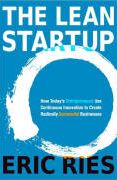
The Lean Startup
How Today's Entrepreneurs Use Continuous Innovation to Create Radically Successful Businesses
by Eric Ries
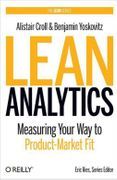
Lean Analytics
Using Data to Build a Startup Faster
by Alistair Croll and Benjamin Yoskovitz
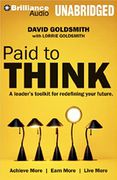
Lean Customer Development
Building Products Your Customers Will Buy
by Cindy Alvarez
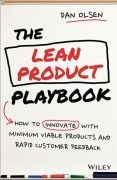
The Lean Product Playbook
How to Innovate With Minimum Viable Products and Rapid Customer Feedback
by Dan Olsen